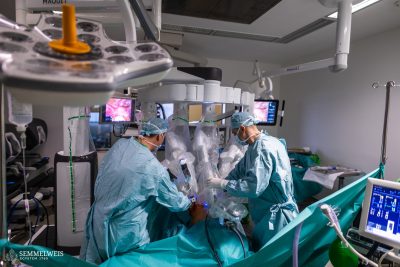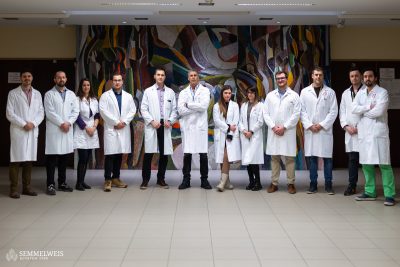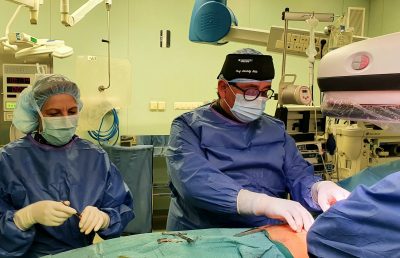A breakthrough has been made in a two-year research period by the identification of a gene responsible for the development of a rare neurological disease. Based on the paper published in EMBO Molecular Medicine Dr. Mária Judt Molnár, Director of the Department of Genomic Medicine and Rare Diseases and project leader said that the disease causes diverse neurological symptoms and its genetic background has not been revealed yet.
 “The research operating within the framework of the National Brain Research Programme involved a mother and her two children. We discovered that the symptoms were caused by the defect of the MSTO1 gene which causes the developmental disorder of the central nervous system and muscular atrophy.”, she said.
“The research operating within the framework of the National Brain Research Programme involved a mother and her two children. We discovered that the symptoms were caused by the defect of the MSTO1 gene which causes the developmental disorder of the central nervous system and muscular atrophy.”, she said.
The gene map of all three participants have been analysed and the results were compared to the reference human genome.
“Based on the clinical symptoms and the previous diagnostic results we have been able to identify the gene that most probably causes the symptoms. It is a very rare group of diseases where the disorder of the muscular system is coupled with developmental anomalies of the nervous system.”, Dr. Mária Judit Molnár said.
There are diverse symptoms, the children showed signs of autism and schizophrenia, on the other hand the mother was suffering from muscular malfunctions and the disorder of the vestibular function. In addition her bones, connective tissues, liver and endocrine organs were also affected.
The results show that the mitochondrion fails to function properly and sequencing identified the gene that is able affect the dynamics of the mitochondria. Functional studies were also needed to verify that the mutation of this gene, which had not been linked to human diseases previously, is the cause of the symptoms. These studies were conducted in Philadelphia, United States in the laboratory of Dr. György Hajnóczky by Dr. Anikó Gál, member of the research group and senior lecturer at the Department of Genomic Medicine and Rare Diseases.
“This is a unique result as it is difficult to identify a new gene that could be responsible for a disease. Human implications of MSTO1 were not studied up till now, its effect had only been described in case of bacteria.”, Dr. Mária Judit Molnár said.
Interestingly, independently of the Hungarian project an Italian research group also found a patient whose symptoms were caused by the malfunction of the same gene. Based on the results of the two research groups the significance of this gene is not extremely rare in case of hereditary neurological disorders.
Tímea Kele
Photo: Attila Kovács – Semmelweis University
Translation: Ágnes Raubinek
Slide image: Shutterstock


